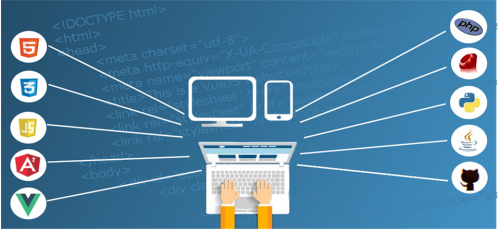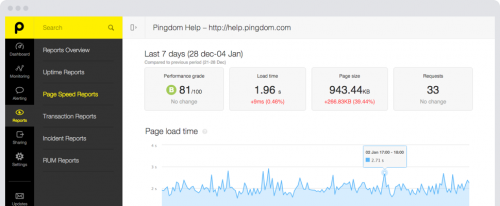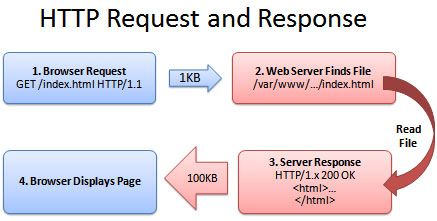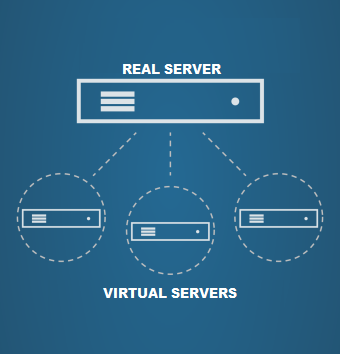
by Harshala | Oct 5, 2018 | Employment Issues, Industry News
What do we mean by employment trends?
A pattern of gradual change in a condition, output, or process, or an average or general tendency of a series of data points to move in a certain direction over time, represented by a line or curve on a graph.
This week’s blog we will seeing the latest trends in the employment (particularly for web professionals).
10 Workplace Trends in 2018
Dan Schawbel provided a forecast for the Top 10 workplace trends for the upcoming year. His purpose is to help prepare organizations for the future by collecting, assessing and reporting the trends that will most impact them. Obviously, most of these impact many industries (not just web professionals).
The top workplace trends for 2018 include:
- Leaders encourage more human interaction
- The next wave of learning credentials
- Companies focus on upskilling and retraining current workers
- Artificial intelligence becomes embedded in the workplace
- Financial and mental wellness get prioritized
- Employee burnout causes more turnover
- Workforce decisions sway consumer behavior
- Companies take diversity more seriously
- The deregulation of labor laws
- The aging workforce

(more…)

by Harshala | Sep 28, 2018 | Web Administration, Web Pro Education, Web Professional Trends
What are Web Servers?
For those just beginning to learn about web technologies, we thought it might be helpful to provide this foundational article. A Web server is a program that uses HTTP (Hypertext Transfer Protocol and the secure HTTPS version) to serve the files that form Web pages to visitors, in response to their requests (which come from the requesting computers browsers). Dedicated computers and appliances may be referred to as Web servers.
Web server also refers to server software, or hardware dedicated to running said software, that can serve contents to the World Wide Web. A web server processes incoming network requests over HTTP and related protocols. This Wikipedia link gives more information on Web Server.

(more…)

by Gary Stevens | Sep 21, 2018 | Industry News, User Experience
Internet users want a speedy experience and they’re not getting it, a fact that leaves them frustrated and website owners with less revenue. Don’t believe it? Numbers don’t lie. A full 53 percent of surfers want any site they visit load in three seconds or less. The largest ecommerce sites in the world recognize this necessity – they load incredibly fast. Most of the rest of the internet leaves a time gap that makes for a lot of gritted teeth and nervous toes tapping the floor. The good news is that speeding up a slow website is not difficult or time-consuming. The bad news is you might not choose to do it.
Are You Flirting with the Performance Poverty Line?
The performance poverty line is a term that represents the point at which being slow doesn’t matter because you’ve already lost most of your traffic. That number sits at around 8 seconds. The more pertinent question is, do you know your website’s speed. REALLY know your website’s speed?
No guessing because this is important stuff.
There’s an easy way to find out. Pay a visit to a website called Pingdom — it’ll probably load fast because it’s sort of their business — and enter your URL in the box. Select a location from the dropdown menu and hit “start.” Unless they’re exceptionally busy (it happens sometimes) you should get a performance summary in less than a minute.

There’s a good chance what you see won’t impress anyone, but that’s okay. Few websites do. We’re here to provide you with a road map to get those numbers headed down, down, down and your visitors to start getting happy, happy, happy. Let’s call this…
A 6-Part Roadmap to Fast Websites and Happy Customers
Part 1: Magically Shrink Your Website
Actually, as far as we know, there’s no way to magically shrink your website but you can get the same effect by applying a sweet little bit of technology called Gzip compression. When implemented, some site owners have seen overall file size reduction of as much as 70 percent. That’s huge. Actually it’s tiny and that’s the point. It works like this. When a request hits the server to view the website, it automatically zips all the files before sending them onto the requester’s browser, where it is unzipped and displayed.
Part 2: Fix Bad Design and Too Many HTTP Requests
Every element on your website — we’re talking about images, videos, scripts, and even text — generates an individual request to the server. The more “stuff” your website has, the more requests there are and the longer it takes to load. If ever there was an argument for using a minimalistic approach when designing your website, this is it. Fewer requests mean a faster website. The tricky part is to not get distracted by all things you could do and stick to only what is needed to accomplish the site’s mission.

Part 3: Put Hefty Images on a Diet
Images are huge. Incorrectly (or not at all) optimized, they put a terrible strain on bandwidth and leave the server and browser gasping from the strain. While we could write a book on the topic, there is one thing you can do that will fix a lot of the issues and that is choose the correct format — png, gif, and jpeg are good — and make the things as small as you can stand BEFORE uploading to your website. If you upload a full size image, even if you reduce it later, the server still has the original version and that’s the one that clogs the pipeline.
Part 4: Upgrade Your Hosting
We love cheap stuff as much as the next person but when it comes to choosing a web hosting plan, you need to understand the different types of plans and know when it’s time to upgrade. Inexpensive shared plans can be as low as a few dollars a month and that’s okay for a hobby or site that doesn’t have much traffic yet. Once you reach a certain level, though, the shared resource approach of this kind of plan will almost certainly mean slow-loading and downtime. While a dedicated server might not be worth the expense, a virtual private server or VPS hosting can be a great compromise.

Part 5: Turn on Browser Caching
Browser caching is an easy-to-implement, tactic that most fast-loading websites use. The idea is simple. Rather than force the server to send over all the website files every time someone visits, static files (those that don’t change) are stored in the browser’s temporary memory and only dynamic files have to be retrieved. Obviously, this doesn’t help on a first visit but, with browser caching enabled, subsequent visits will be quicker. For WordPress websites, W3 Total Cache is a free plugin to look for. Others just require a simple code addition.
Part 6: Resolve Plugin Conflicts
This WordPress-specific advice is based on the reality that a lot of site owners install plugins that they never update or even use. Considering the third-party nature of these bits of software, it should be no surprise that they don’t always play nice together — they weren’t intended to. If your WordPress website is slow or buggy, one of the first actions to take is to uninstall any plugins you aren’t using. After that, turn what’s left off one at a time and check site speed. There’s a good chance you’ll find one of the culprits to slow loading.
Final Thoughts
The state of technology today is such that people expect (even if it’s not a reasonable standard) a website to load in three seconds or less. A clean, fast-loading experience will go a long ways towards creating loyal customers and more revenue, which are both good things to shoot for as an online entrepreneur. Keep in mind that the process is iterative. There’s no magic wand that will turn your site into a speed burner. Small actions taken methodically, such as the ones described, should, over time, move you incrementally closer to that three second target. Good luck and thanks for reading.

Member author Gary Stevens is a front end developer. He’s a full time blockchain geek and a volunteer working for the Ethereum foundation as well as an active Github contributor.

by Harshala | Sep 14, 2018 | Industry News
Why Your Business Needs a Mobile App?
More and more small and midsize businesses are following the mobile trend, understanding that an effective mobile strategy involves more than just a mobile-friendly website. These days you’ll notice that many small businesses you interact with in your everyday life have their own dedicated mobile app. These companies are ahead of the game when it comes to taking their marketing to the next level.

Here are 7 reasons of why your business needs a mobile App.
Speaking of apps, here are some of those we have found useful. Perhaps you rely on others. Please post yours in the comments.
(more…)

by Harshala | Sep 7, 2018 | Content Strategy, Industry News, State of the Web
What is Virtual Reality?
The computer-generated simulation of a three-dimensional image or environment that can be interacted with in a seemingly real or physical way by a person using special electronic equipment, such as a helmet with a screen inside or gloves fitted with sensors. The definition of virtual reality comes, naturally, from the definitions for both ‘virtual’ and ‘reality’. The definition of ‘virtual’ is near and reality is what we experience as human beings. So the term ‘virtual reality’ basically means ‘near-reality’. This could, of course, mean anything but it usually refers to a specific type of reality emulation.

(more…)

by Mark | Aug 31, 2018 | Web Security
Another week, another data breach
As we develop web sites and APIs, we need to keep security in mind. I know this is obvious, but it is also something often overlooked. It is not glamorous. It is not something that has perceived value by many in management. That is, until there is a security breach and associated bad publicity. Security vulnerabilities come in many different guises. Many have one thing in common – they were addressed many years ago. Yet, we often keep making the same mistakes on sites. We know how to fix many of these. We simply have not forced the idea that security must be incorporated into all our work processes. Just look at the OWASP top 10 vulnerabilities. Sure there are differences between the 2013 and 2017 versions, but there are many similarities as well. Cross site scripting remains a threat (as does SQL injection and many other vulnerabilities).

We all need to be thinking about security as we develop web applications. However, those teaching application development need to stress this in every project assigned. Unless security becomes ingrained in our application development process we will continue to repeat the mistakes of the past. And. Data breaches will continue.
(more…)

by Harshala | Aug 24, 2018 | Uncategorized
What is World Wide Access or Accessible Web Design?
The World Wide Web has rapidly become the dominant Internet tool, combining hypertext and multimedia to provide a network of educational, governmental, and commercial resources. Because of the multimedia nature of the web and the poor design of some websites, many Internet users cannot access the full range of resources. Some visitors cannot see graphics, cannot hear audio, cannot operate a mouse, uses slow Internet connections and modems or equipment that cannot easily download large files, or have difficulty navigating sites that are poorly organized with unclear directions because they have learning disabilities, speak English as a second language, or are younger than the average user.
What is Accessible Design?
Accessible design is a design process in which the needs of people with disabilities are specifically considered. Accessibility sometimes refers to the characteristic that products, services, and facilities can be independently used by people with a variety of disabilities.
The World Wide Web Consortium (W3C) develops and maintains the protocols used on the web to insure interoperability to promote universal access. The W3C’s Web Accessibility Initiative (WAI) has proposed guidelines for all web authors.

(more…)

by Harshala | Aug 17, 2018 | Content Strategy, Web Content
What is Information Architecture?
Information architecture is the practice of deciding how to arrange the parts of something to be understandable. It is in the websites we use, the apps and software we download, the printed materials we encounter, and even the physical places we spend time in.
A good Information Architecture helps people to understand their surroundings and find what they’re looking for – in the real world as well as online. Practicing information architecture involves facilitating the people and organizations we work with to consider their structures and language thoughtfully.

Information architecture (IA) focuses on organizing, structuring, and labeling content in an effective and sustainable way. The goal of IA is to help users find information and complete tasks. To do this, we users need to understand how the pieces fit together to create the larger picture, how items relate to each other within the system.
As many students (and teachers) begin a new term this month, we thought it would be helpful to review some of these fundamental tenants. It is always a good idea to focus on the basics and make certain we have a solid foundation.
(more…)

by Harshala | Aug 10, 2018 | Content Strategy, Semantic Web, Web Content
What is Semantic Markup mean?
Semantics is the study of language meaning – the words used to communicate. Semantic markup should be used in web pages we create and modify.
In our technology world we use semantic language. Semantic HTML is the use of HTML markup to reinforce the meaning of the information in webpages and web applications rather than merely to define its presentation or look. Semantic HTML is processed by traditional web browsers as well as by many other user agents.
For HTML it is the tags we use to mark a document up. Markup is how a web document is created, or the way you write a document using the language available to you. For most web documents this is still HTML, so it is how you write the content you want to display using HTML.

(more…)

by Harshala | Aug 3, 2018 | Employment Issues, Job and Resume Tips from the Pros
What work skills can make you more marketable to employers in 2018?
Change is always constant. So naturally, the job skills that employers look for in new hires change from year to year. It’s one of the best ways for companies to stay competitive and ahead of the never-ending curve. According to Julie Friedman Steele, board chair and CEO at World Future Society “The workplace moves rapidly and employers need workers who stay current.” That means you need to consistently improve your skills and develop new ones.

Here are 7 work skills most employers look for –
- Problem solving
- Data analytics
- Social media literacy
- Creativity
- Resiliency
- Good business sense
- Willingness to learn
This list comes from a good article covering 7 work skills which make you more marketable to employers in 2018. Note that most of these relate to non-technical skills. Those are assumed these days.
(more…)














